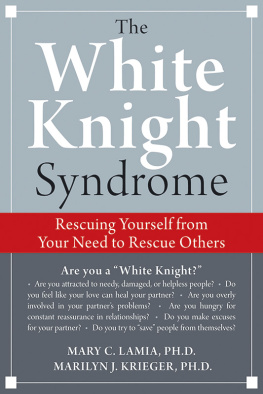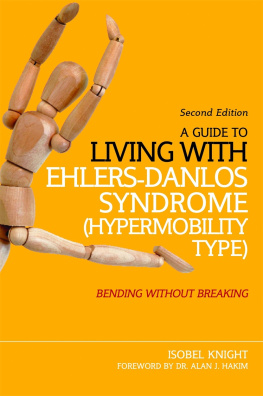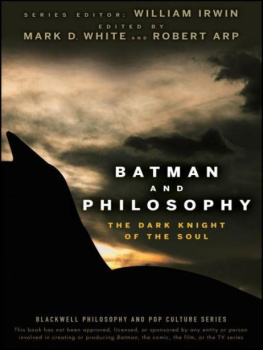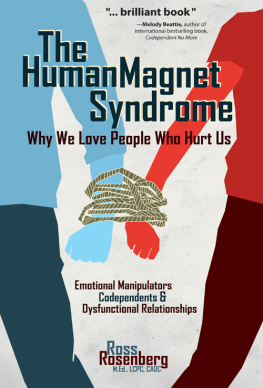1.
White Knight Basics
White knights have a compulsive need to rescue, but how and why they rescue can be quite varied. This chapter will give you an overview of the basic characteristics common to all white knights and the variance among them. Four subtypes of rescuers will be introduced: the overly empathic white knight, the tarnished white knight, the terrorizing/terrified white knight, and the balanced rescuer. You will learn a great deal more about these four subtypes in later chapters. We end this chapter with a summary of the white knight syndrome and a discussion of answers to the questionnaire that appeared in the introduction.
White Knight Commonalities
White knights treat their partners altruistically, but their altruistic endeavors often represent a struggle with their own internal conflicts, as well as a way of staying close to their partners. Does this mean that the white knights rescuing behavior is not truly altruistic? This complex question will be addressed later in the book. For now, we will focus on the white knights conscious helping behavior and consider it as altruistic.
White knights often have a history of loss, abandonment, trauma, or unrequited love. Many of them were deeply affected by the emotional or physical suffering of a caregiver. In our work with white knights weve found them to be emotionally sensitive and vulnerable, traits that cause them to be hurt easily by others.
Empathy, the ability to understand and identify with the feelings of another, is a highly developed character trait of all white knights. The white knights ability to put herself into another persons shoes can be used either to help or, unfortunately, to control or hurt her partner. We discuss empathy in more detail in later chapters.
After carefully reviewing the cases that met our definition of a white knight, we created a list of traits and behaviors that characterize the white knight. Typically, white knights have a history that includes many of the following:
- Self-defeating behavior that may involve substance abuse
- Heightened awareness in childhood of a parents hardships
- Childhood neglect
- Childhood emotional, physical, or sexual abuse
- Loss or threat of loss of a significant caregiver in childhood
- Repeatedly finding partners who need rescuing
A white knight typically has many of the following character traits:
- Fears emotional distance
- Is very emotionally vulnerable and sensitive
- Has a tendency to idealize the partner
- Has an extreme need to be viewed as important or unique
- Tends to be self-critical or reactively blames, devalues, and manipulates others
In relationships, a white knight tends to show many of the following behaviors:
- Is attracted to a needy partner or a partner with a history of trauma, loss, abuse, or addiction
- Fears being separated from the partner, losing the partners love or approval, or being abandoned by the partner
- Engages in controlling behavior, often under the guise of helping
- Maintains or restores connection with the partner by being extremely helpful or good
- Responds ambivalently to the partners success
- Describes a sense of oneness with the partner
- Fails to recognize the partners manipulative behaviors
- Is seduced by the sexual or dramatic behavior of the partner
- Evokes strong feelings in the partner in order to avoid his or her own emotional discomfort
- Maintains hope for a gratifying relationship by denying the reality of the partners issues
The Subtypes
To create our subtypes we reviewed numerous cases of rescuing behavior in intimate relationships. We examined and compared the personality styles, behavior in relationships, and early history. From this review, four basic subtypes of rescuers emerged: the overly empathic white knight, the tarnished white knight, the terrorizing/terrified white knight, and the balanced rescuer. These subtypes are not discrete entities but represent our observation of clusters of characteristics that can overlap. Within these subtypes we have noted certain dominant psychological qualities. But these qualities are not necessarily fixed or permanent. Some white knights, for example, move from one subtype to another as they gain insight and perspective from experiences, situations, or major changes in their lives.
The Overly Empathic White Knight
The overly empathic white knight fears emotional distance. This fear can be triggered by many sources, such as separation, loss of love, or loss of approval. She tries to maintain or restore an emotional connection to her partner by being needed, good, or caregiving and by positively affecting her partners emotions. Sexual jealousy and insecurity can trigger her fear of emotional distance. As a result, the overly empathic white knight is driven to further prove that she is a valued partner and lover.
The overly empathic white knight worries excessively about her partner. This worry is especially apparent during separations or when she feels he needs her help or protection, lest he experience some kind of discomfort. One overly empathetic white knight worried that her partner had not planned his work schedule properly and that his poor planning might cause him to experience too much stress. Although she may have been correct in predicting her partners stress, when she created a computer spreadsheet for his various tasks to help him better manage his time, he resented her help and felt humiliated. In situations like these, the white knight often feels hurt, if not angry, when her partner rebuffs her offerings, or perceives her help as a criticism or a nuisance.
As with most white knights, the overly empathic white knight may privately take some of the credit for his partners success. Yet he may also view his partners success with ambivalence. Because this white knight fears emotional distance, he may worry that if his partner is successful, she may no longer need the relationship or want it to continue. The major psychological forces at work within this white knight are a heightened sense of empathy, excessive guilt, and an intense fear of emotional distance. These forces are manifested in a variety of ways.
Sara
Thirty-one-year-old Sara began therapy after she ended her one-year relationship with her boyfriend, Peter. Sara was a financial consultant whose professional success stood in stark contrast to the poverty of her childhood. When Sara was eleven, her alcoholic father lost his job, and because of his intermittent bingeing, he was able to find only menial employment from which he was repeatedly fired. This financial hardship required Saras mother to work overtime, leaving Sara responsible for maintaining the home and caring for her two younger brothers. In spite of these burdens, Sara did well in school and won a college scholarship. She left for college but always felt guilty for doing so.
Looking back at her college years, Sara realized that all of her boyfriends had been marginal students whom she had propped up. Shed help them with their term papers, do their laundry, and on one occasion she paid her boyfriends overdue credit card bill. This pattern continued in her postcollegiate life. As a financial consultant, she mentored others on a regular basis. She met Peter when she was a consultant to his division of a small company.
The disorganization and financial chaos Sara found in Peters work environment was echoed in his life outside of work. His home was a wreck, his financial situation a mess, and his job status at the company very uncertain. Sara got his division and his life organized. As they grew closer, Peter relinquished most of his responsibilities to her, saying that she was just better and quicker at them than he was. Although Sara liked being helpful and loved how much Peter needed and appreciated her, she slowly became resentful.










